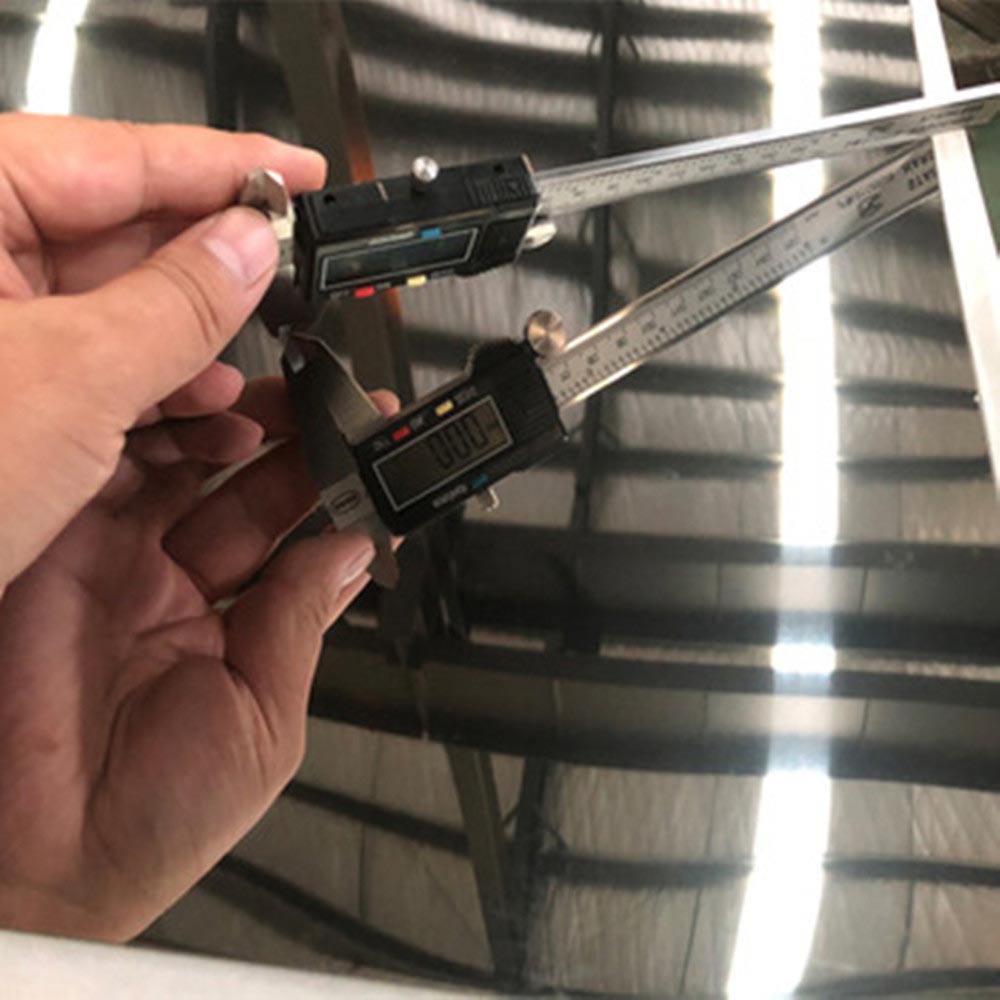The processing of mirror stainless steel sheets (also known as 8K sheets) requires extremely high technical skills and precision. Its core is to completely eliminate surface defects through a series of progressively fine grinding and polishing steps, ultimately achieving a mirror-like, high-gloss, high-definition image.
Overview of Core Steps
The processing of mirror stainless steel sheets is divided into two major stages: surface grinding (rough grinding/fine grinding) and surface polishing (fine polishing/mirror polishing). The entire process can be summarized as a step-by-step process from coarse to fine.
Stage 1: Surface Grinding
The purpose of this stage is to smooth the surface of the raw rolled sheet (such as the 2B side or BA side), eliminating macro-defects such as rolling marks, scratches, and oxide layers, laying a solid foundation for polishing.
Substrate Preparation:
Usually, the starting point is the 2B side (the surface that is cold-rolled, heat-treated, pickled, and finally passivated) or the BA side (a bright annealed surface with a certain inherent gloss). Starting with the BA side reduces the amount of grinding work.
Coarse Grinding:
Purpose: Removes surface scale, visible scratches, and uneven surfaces.
Equipment: Use a large grinder or belt sander.
Abrasive: Use a coarser sanding belt or wheel, such as 80# to 120# grit.
Result: The surface is roughened but macroscopically flattened.
Semi-Fine Grinding:
Purpose: Removes deep wear marks left by coarse grinding.
Abrasive: Use a finer-grit sanding belt, such as 150# to 320#.
Result: The surface becomes uniformly matte and smooth to the touch.
Fine Grinding:
Purpose: Achieve a very fine, uniform matte surface (also known as a “hairline” or “snowflake” effect), which is a key prerequisite for achieving a high-quality mirror finish.
Abrasive: Use a finer-grit sanding belt, such as 400# to 800# or even higher.
Result: The surface is free of visible scratches, with an extremely fine and uniform texture.
Second Stage: Surface Polishing
This stage uses physical polishing to create plastic deformation on the surface, filling tiny scratches and achieving a lustrous finish.
Polishing:
Purpose: To initially create a glossy finish.
Equipment: Use a polishing machine.
Materials: Use a harder polishing wheel and a coarse polishing paste (usually green or white, containing chromium oxide or aluminum oxide abrasives).
Result: The surface begins to reflect light, but the image clarity is not high.
Mirror Polishing:
Purpose: To achieve the final mirror finish, achieving the highest gloss and image clarity.
Equipment: Use a precision polishing machine, or a combination of manual and vibratory polishing machines.
Materials: Use a soft cotton or cashmere wheel and an extremely fine polishing paste (such as diamond polishing paste, ranging from 1 micron to 0.5 micron or even finer).
Principle: A soft cloth wheel and extremely fine abrasives create micro-fluidities in the surface metal, completely “filling” even the smallest scratches, resulting in a mirror-smooth surface.
Origin of “8K”: “K” represents the grit size of the diamond paste. 8K originally referred to a paste with a grit of 8000 mesh. It is now a general designation for a high-mirror finish.
Post-Processing and Inspection
Cleaning:
After polishing, the surface must be thoroughly cleaned to remove all polishing paste and grease. This is typically done with a neutral or slightly alkaline cleaning agent, combined with ultrasonic cleaning or manual scrubbing. The surface should then be rinsed with deionized water and dried.
Inspection:
Visual Inspection: Under standard light sources, check the gloss and image clarity against a standard sample to ensure the absence of defects such as polish marks, orange peel, and pinholes.
Instrumental Testing: A gloss meter is used to measure the gloss value (GU), and a roughness meter is used to measure the arithmetic mean deviation (Ra) of the surface profile. The Ra value for mirrored surfaces is typically required to be less than 0.01 μm.
Applying a protective film:
To prevent scratches on the perfectly mirrored surface during transportation and processing, a special PE or PVC protective film is applied to the surface.
Key Factors Affecting the Mirror Finish
Substrate Quality: The surface quality of the original plate (such as 2B plate) is crucial. The more defects in the substrate, the more difficult and expensive the grinding and polishing process.
Equipment Accuracy: The stability and accuracy of the polishing equipment directly impact the consistency of the final result.
Operator Skill: Especially during the fine polishing stage, an experienced operator’s ability to control pressure and speed is crucial.
Stainless Steel: Austenitic stainless steels (such as 304 and 316) are the easiest to polish due to their inherent ductility. Other types (such as 430 ferritic stainless steel) are more difficult to achieve the same mirror finish.
In short, the processing of mirrored stainless steel panels is a delicate process that combines mechanical, chemical, and manual expertise. Each step is designed to minimize surface roughness, thereby reflecting the clearest light.

Cherry
Website: www.jinyoumetal.com
Email: Cherry@jinyoumetal.com
WhatsApp/WeChat: +86 13373795593
#ssmirrorsheet #ss8ksheet #stainlesssteelmirrorsheet #stainlesssteel8ksheet